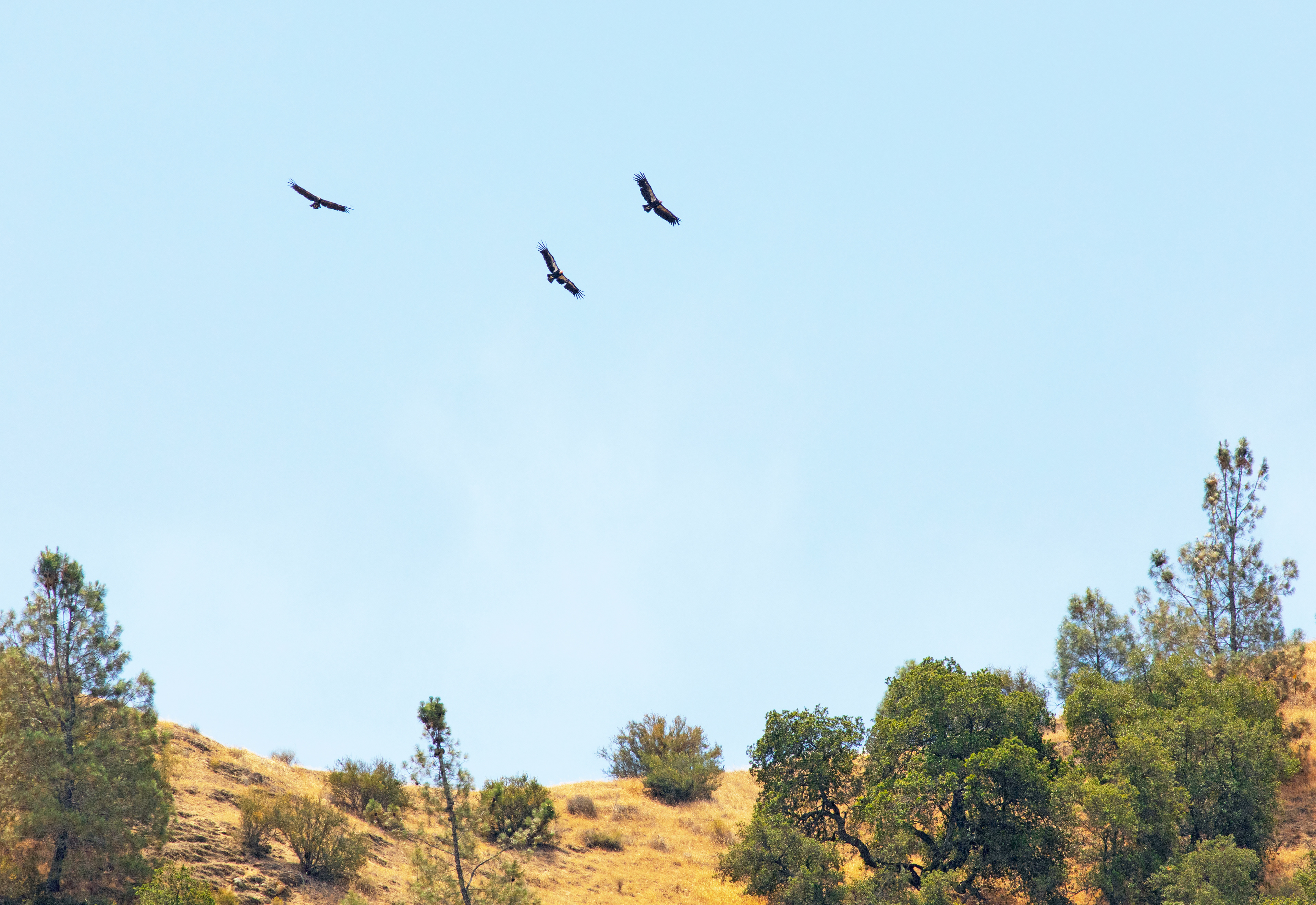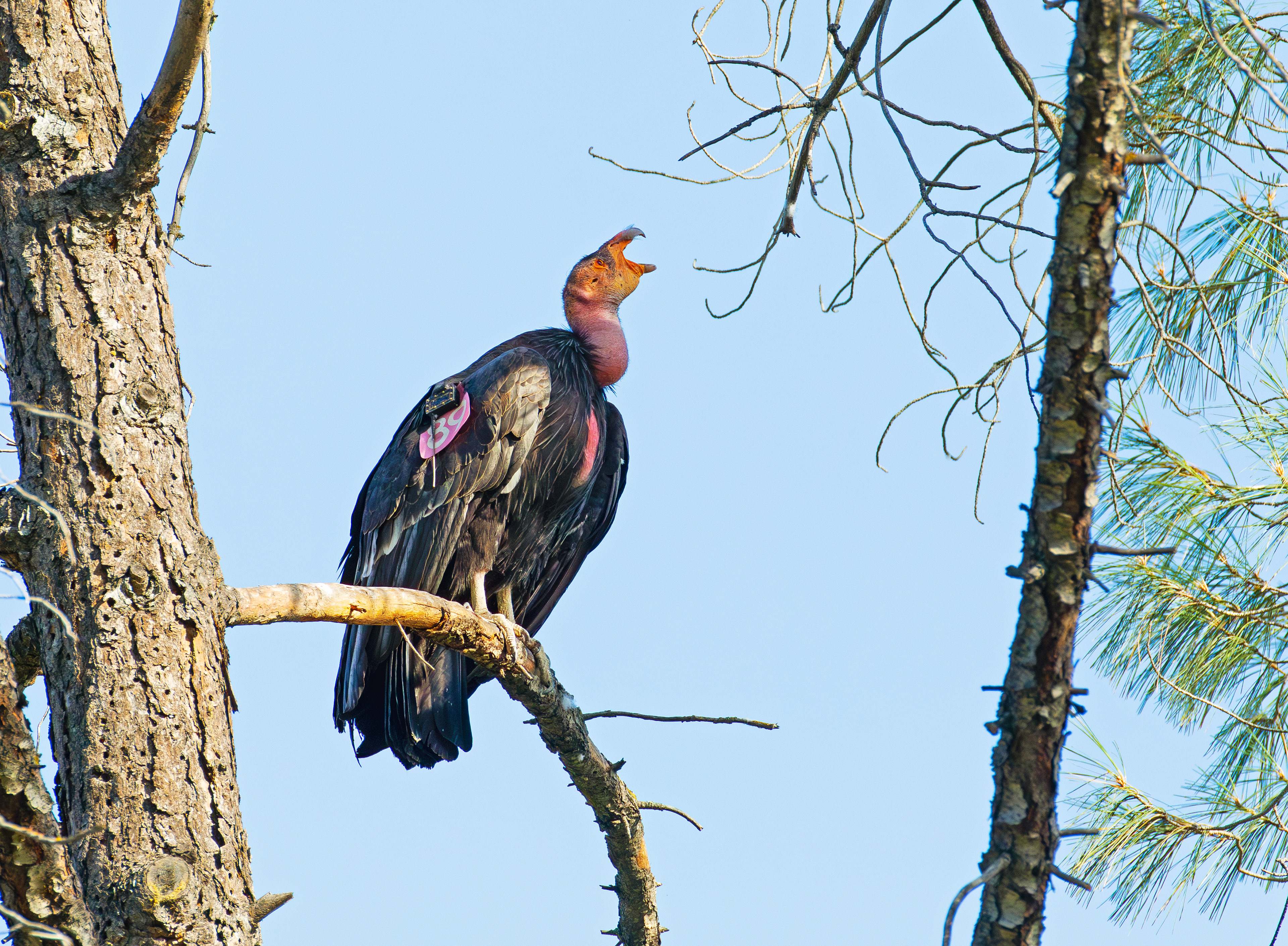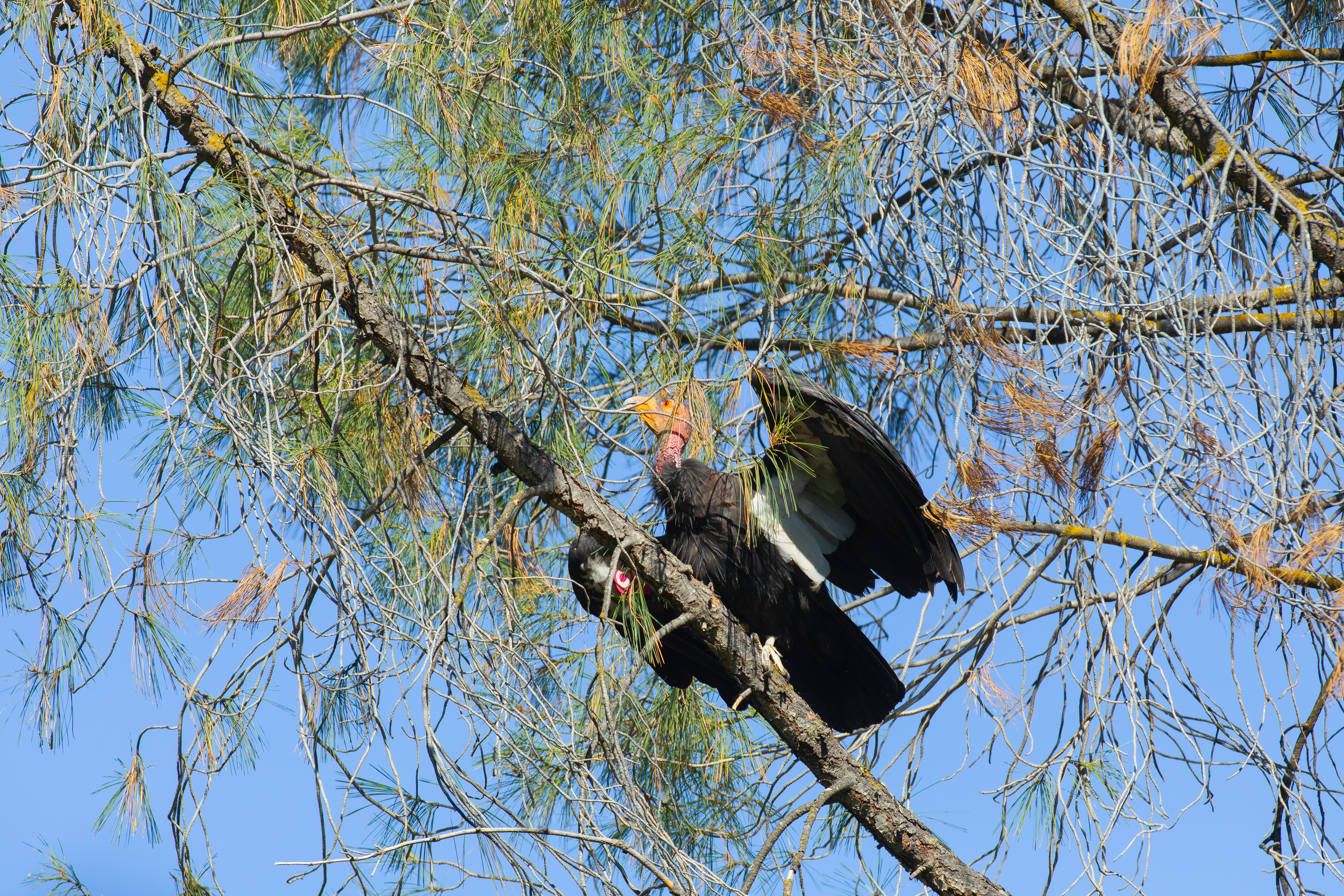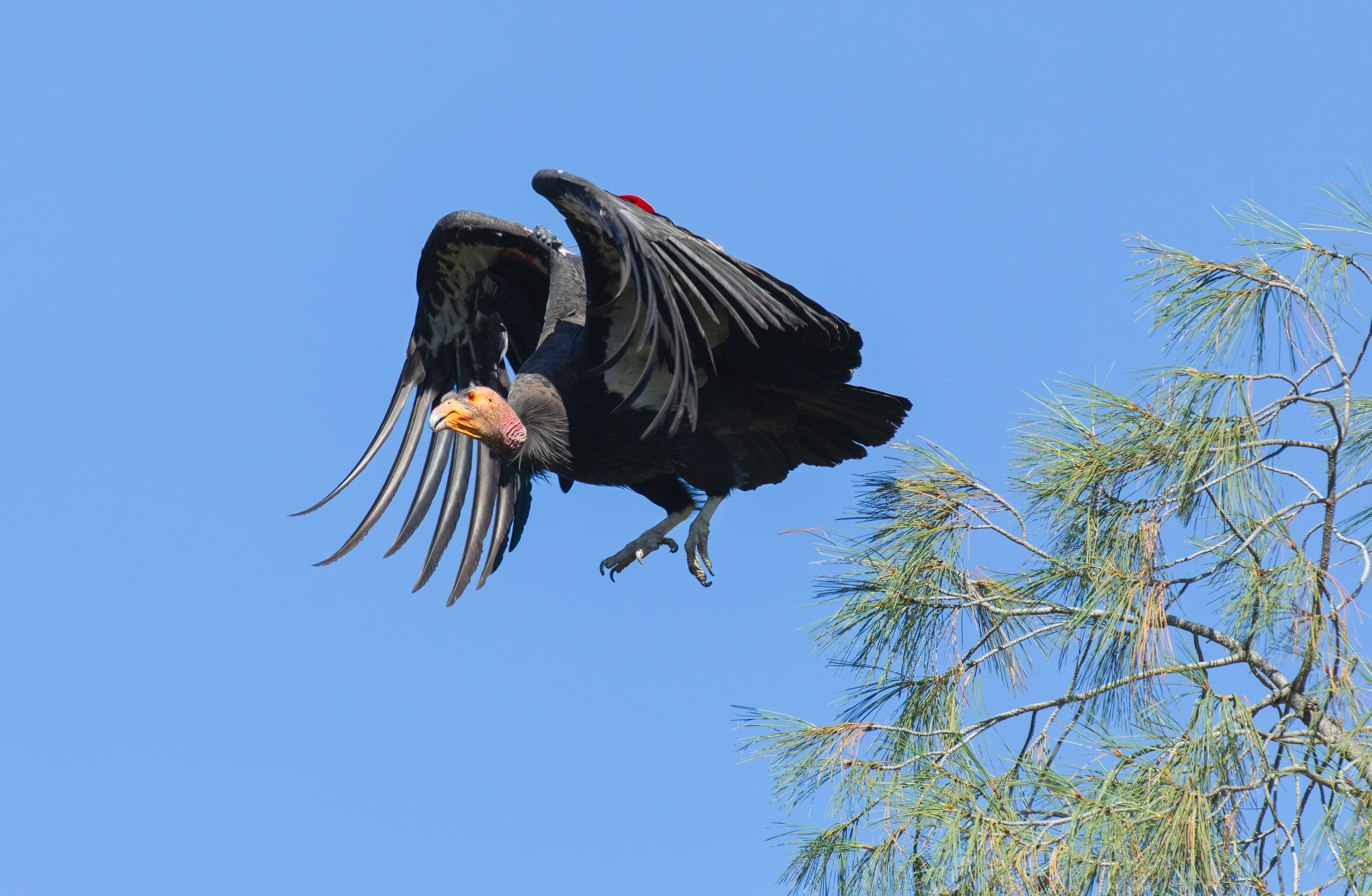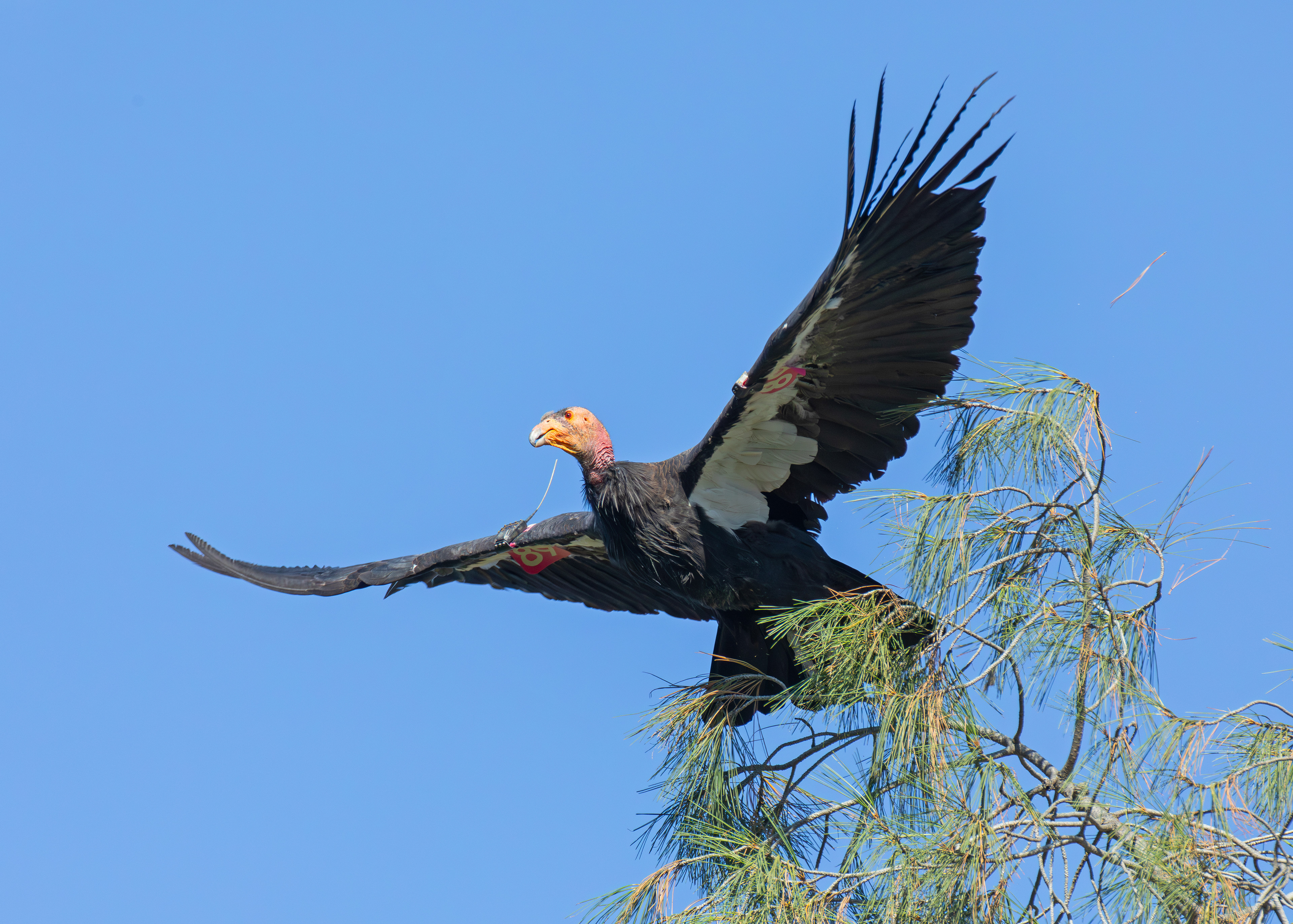Turkey Vulture
I've seen these birds just about everywhere I've lived or visited in the United States. All of these images are from the Cuyamaca Mountains in California, except for Image 24, which is of a bird perched in early morning light at the Sabal Palm Sanctuary in Brownsville, Texas, and Image 25 from Madera Canyon, Arizona, and the last 4 images are from Pinnacles National Park which is very popular with Turkey Vultures, as well as being a haven for California Condors.





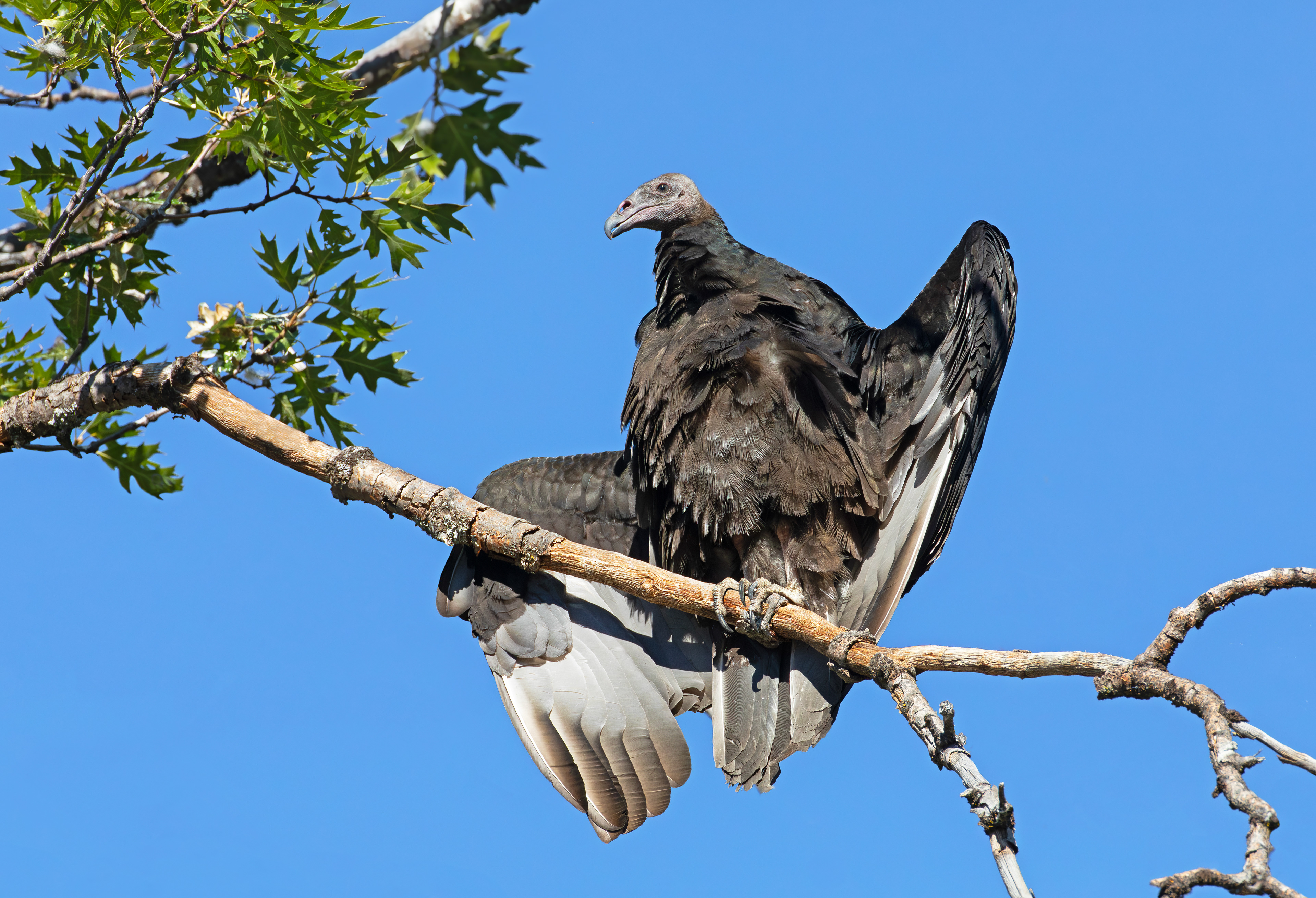



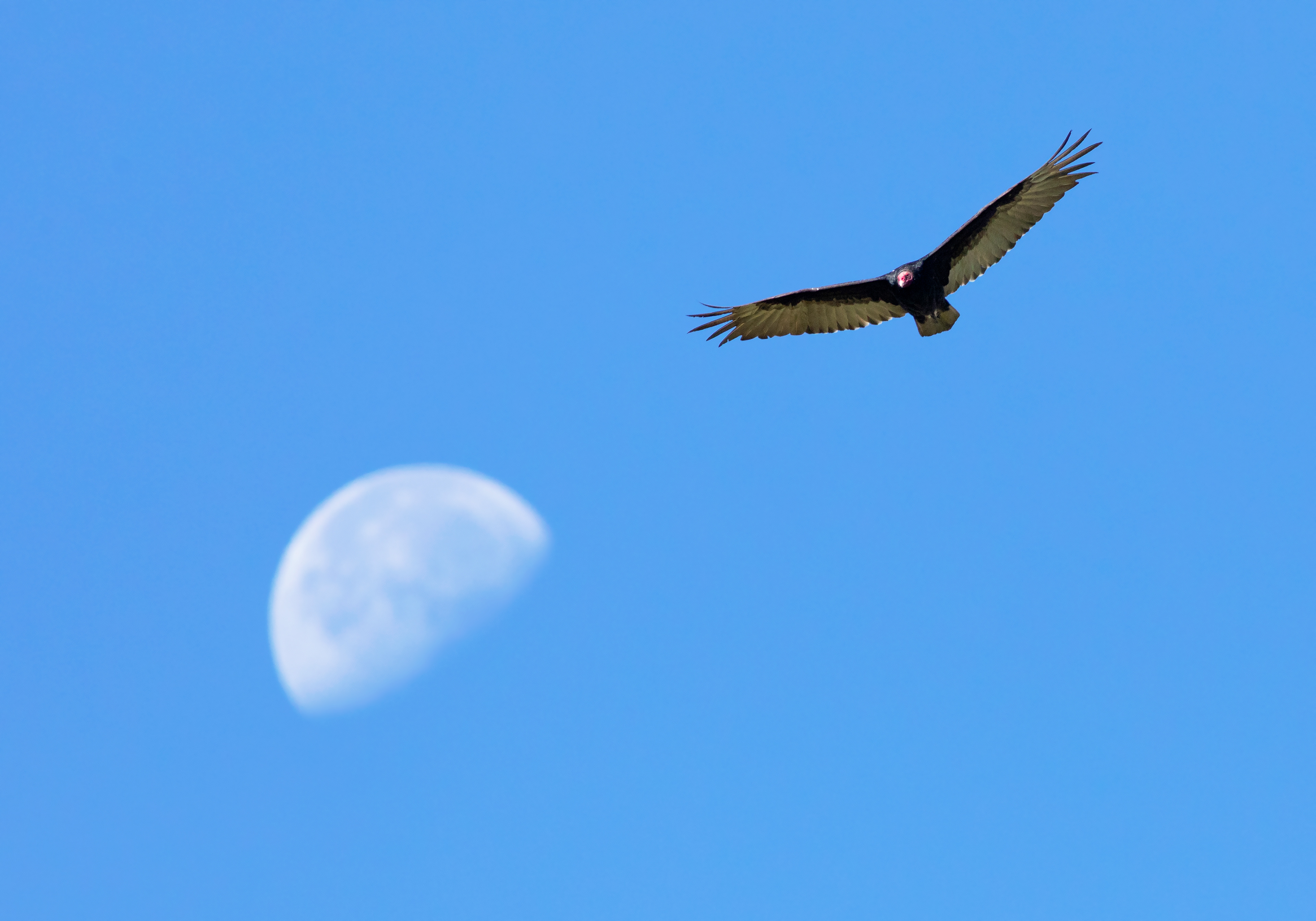


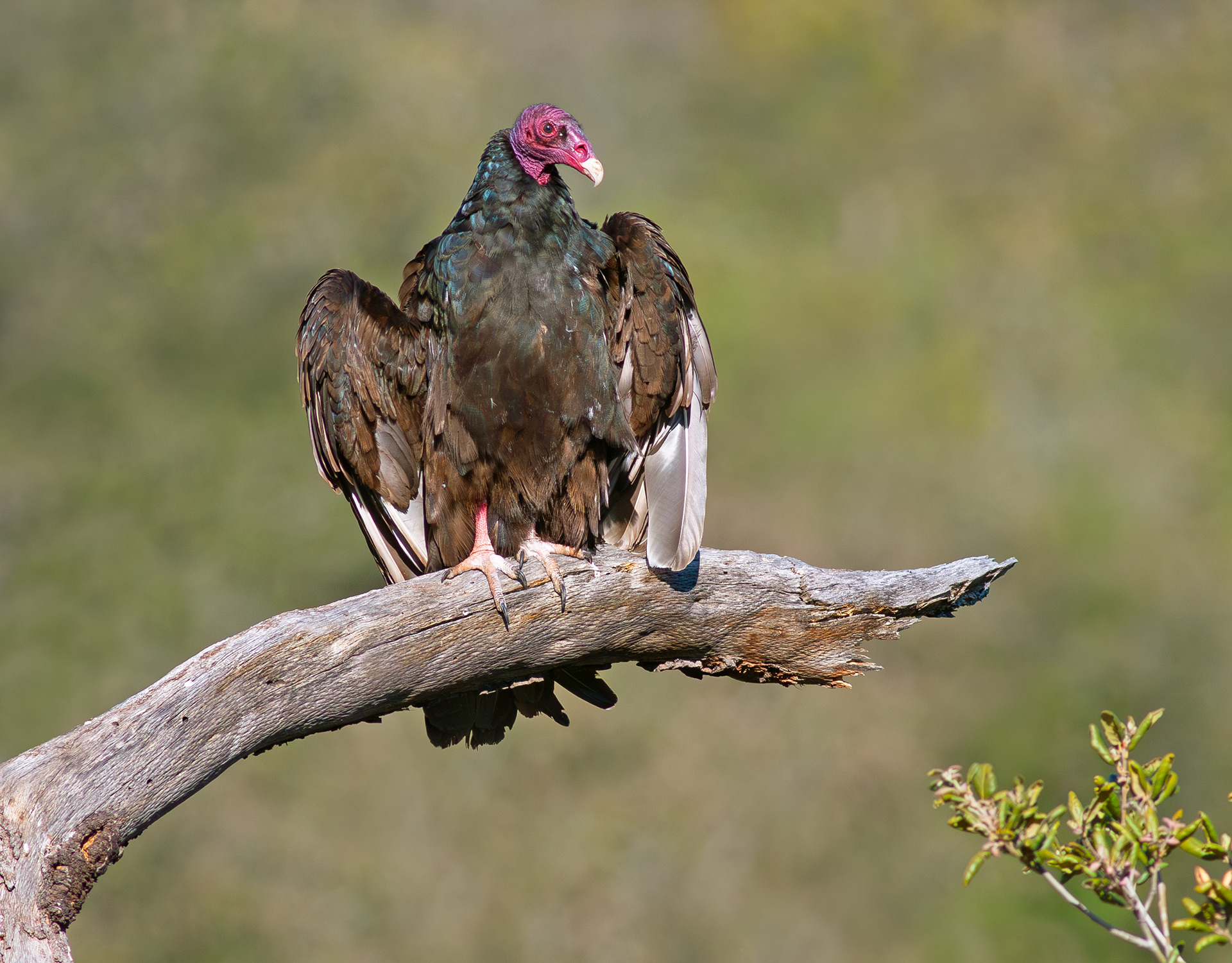

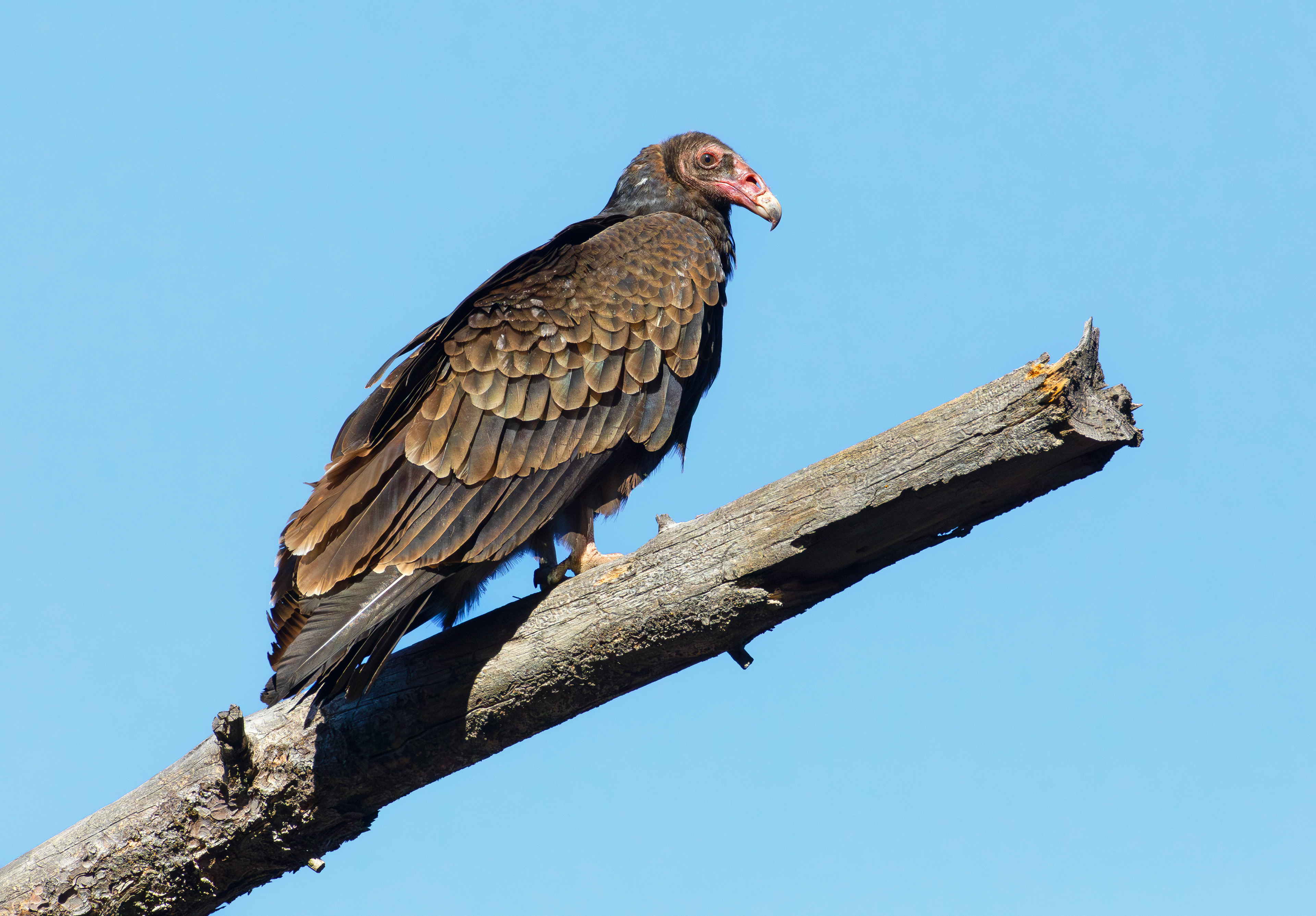



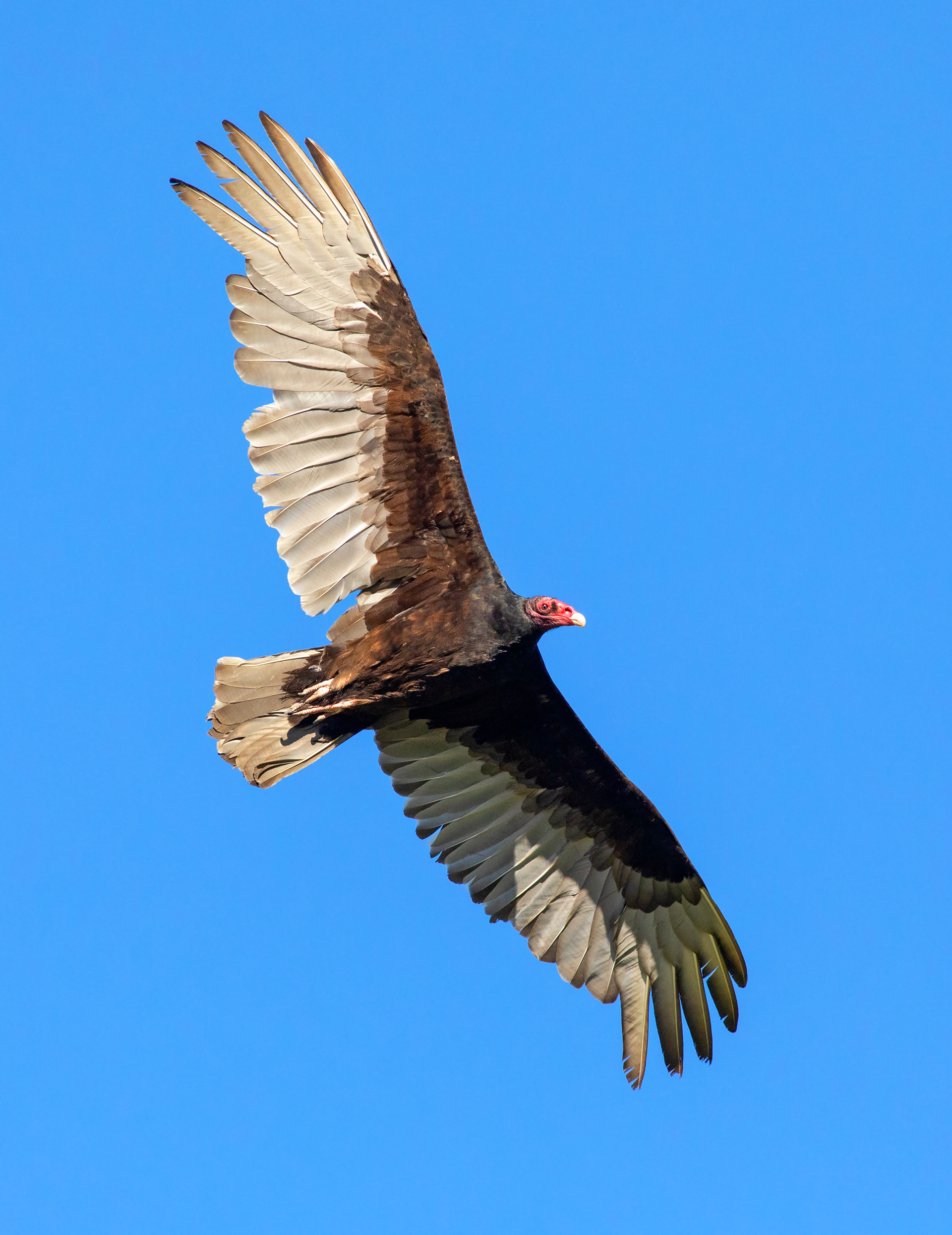
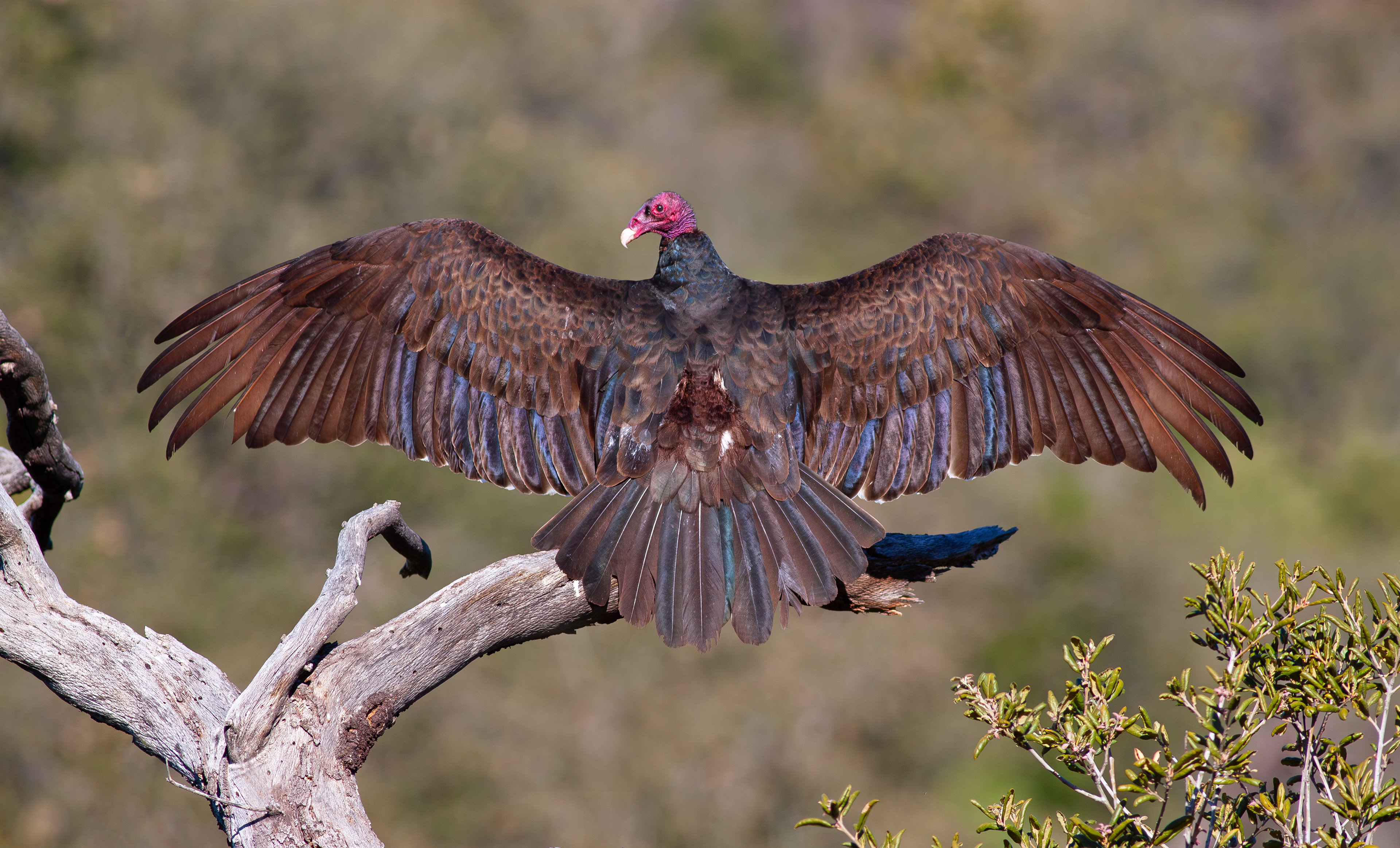


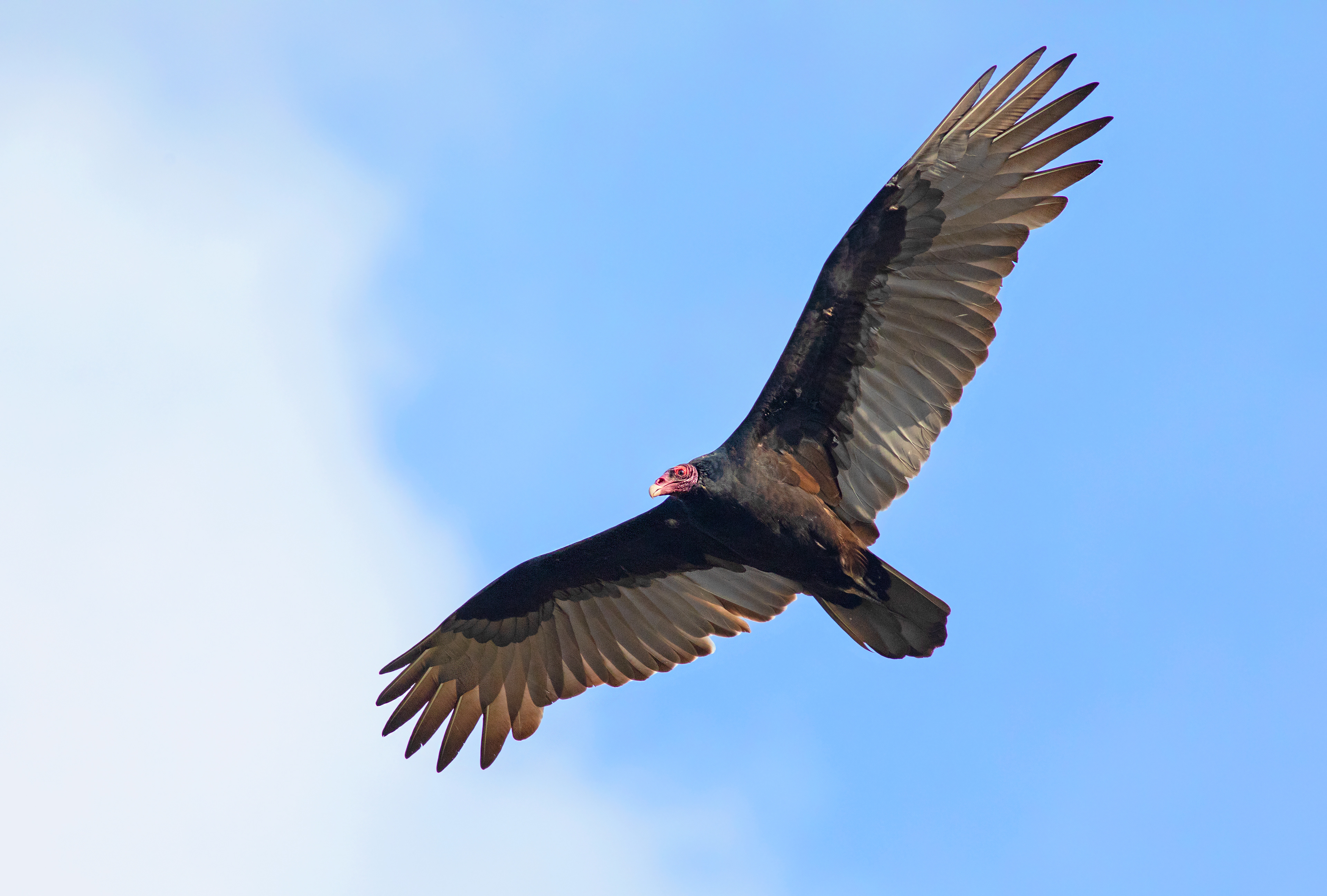






California Condor
Image 1: Three California Condors flying above a ridge slightly to the east of the Campground at Pinnacles National Park, in June of 2022.
Images 2-7: In July of 2023, we spent several days in Pinnacles National Park. On the evening of July 28th, eight condors joined a large kettle of Turkey Vultures circling near the campground. In the morning around 8 am we discovered two condors who were perched in a small dead tree quite close to the campsite where we were staying. The first photo here was taken in this dead tree. We later identified the birds as Pink 89 – full number 889 (“Narcissa”, slightly over six-year-old female – reference: Ventana Wildlife Society website), and Yellow 4 – full number 204 (“Amigo”, slightly over 24-year-old male – reference: Ventana Wildlife Society website). At around 8:45 am, Narcissa flew across the road to a Gray Pine tree with several Turkey Vultures in it within the center of this campground loop, close to campsite #66. She rested, moved around in the tree a bit, and then clambered up a limb of the pine, and finally took flight, as the images show.
Image 8: Two California Condors perched with Turkey Vultures in a Gray Pine slightly north of the intersection of Condor Gulch, Blue Oak and High Peaks Trails in the high country of Pinnacles National Park, July 27, 2023. We were informed that there was a nest in this area.
